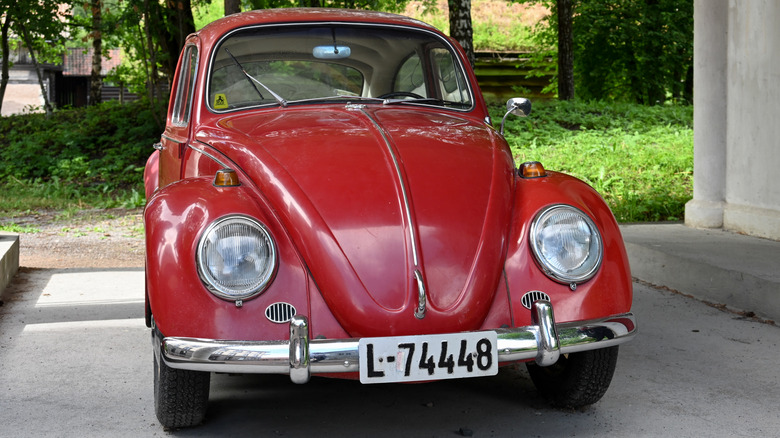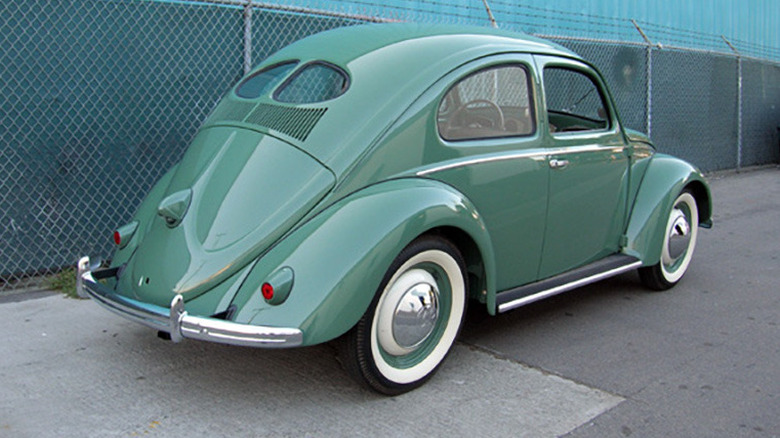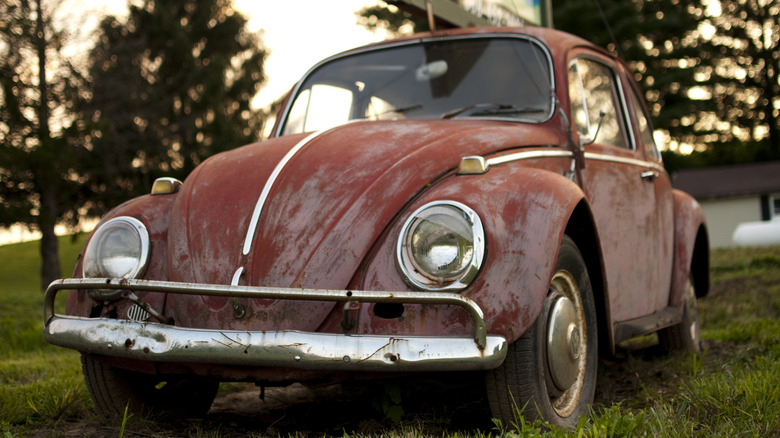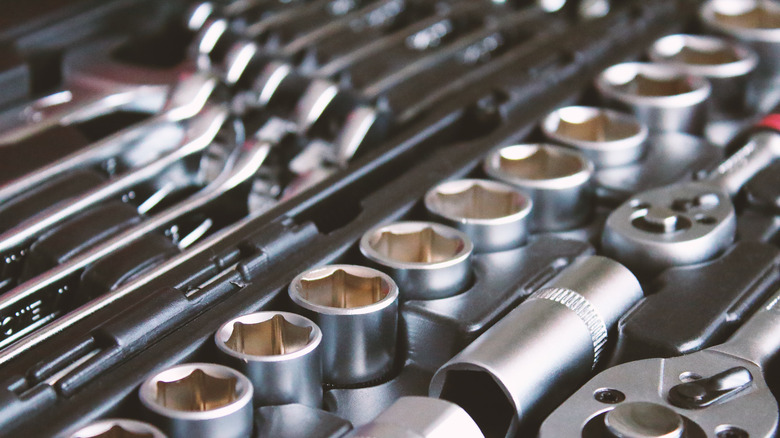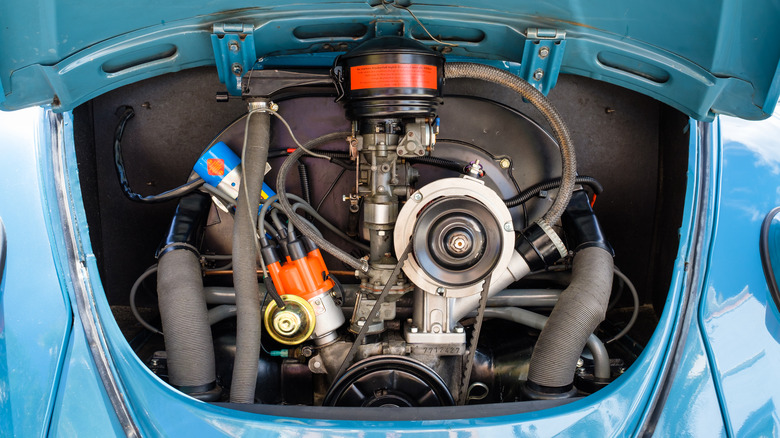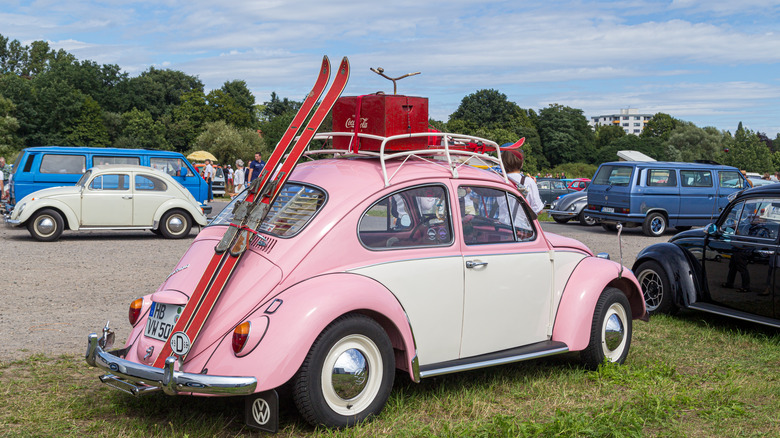5 Things To Know Before Restoring A Classic VW Beetle
The first Volkswagen Beetle sold in the U.S. hit the market in 1949, and while Dutch importer Ben Pon sold exactly two of them that year, Volkswagen would go on to sell more than 20 million Beetles worldwide over the model's lifespan. Thanks to those huge production numbers, classic Beetles are commonly available at reasonable prices today. As we noted in our list of classic cars that make great restoration projects, accessibility and retro charm make the old-school Beetle a great choice for a rebuild.
Restoring any vehicle can be daunting and will require a substantial investment of time as well as careful attention to detail throughout the process. That said, a classic Beetle is relatively simple mechanically and, once restored, makes for a vehicle with enduring appeal and unique character. Knowing what you're in for before you start will help you maximize your enjoyment-to-frustration ratio, so here are five things to keep in mind before you set about fixing up an old VW Beetle.
Prices vary widely based on model year and style
When it comes time to shop for a project condition Beetle, it helps to know that they vary widely in price across the different model years. Unsurprisingly, the oldest examples tend to fetch the highest prices. 1946-1953 split window Beetles like the one pictured above can go for more than $15,000 in project condition. One that runs and drives can cost more than three times that much. Once restored, split window Beetles will give you a good return on your investment; one sold in 2021 for $71,000.
The oval window models made between 1954 and 1957 are much more affordable, often selling for less than $10,000 in project condition. Prices continue to drop as you move along the Beetle's evolutionary timeline. 1958 and later big window Beetles can be found for under $5,000, but they can still be flipped at a substantial profit. Restored big window Beetles frequently sell for more than $30,000 and a fully restored 1956 model sold for nearly $50,000 in 2023.
[Featured image by PFan70 via Wikimedia Commons|Cropped and scaled|Public Domain]
Rust is a frequent issue with old Beetles
As we've written about before, anyone buying a classic Volkswagen Beetle should check it thoroughly for rust. If the drain holes in the body have become plugged, standing water will likely have damaged the passenger footwells or inner body cavities. Cars that have been sitting for a long period of time may also suffer rust damage in the frame; this can be dangerous and expensive to repair. It's a good idea to crawl underneath the car and poke at any rusty spots on the frame or body with a screwdriver. Surface rust can be sanded off and painted over, but some gentle prodding will reveal more serious damage.
You will also want to check the spare tire well, kick panels, door sills, and the parcel shelf behind the back seat. Suspension, engine, and transmission mount points are also prone to rust and will lead to difficult and costly phases in your restoration process. You should also check the body carefully for any previous rust repairs by looking for body filler, mismatched paint, or rough surfaces around the lights, bumpers, and wheel wells.
You'll need metric tools and fasteners
If you're worked mostly on American-made vehicles in the past, you probably have a set of tools that is made up primarily of SAE (inch-based) sockets and wrenches. Classic Beetles have metric fasteners almost everywhere, with the most commonly used sizes being 10,12,13,15, and 17mm. The most notable exception are the bolts that hold the seat belts in place, as this safety feature was a requirement in the United States only.
You'll also need larger metric tools when it comes time to work on your Beetle's engine. The dyno pulley on most Beetles is attached with a 19mm bolt, and to remove the flywheel you will need a 36mm or 38mm socket, depending on whether that part is a factory original or an aftermarket upgrade.
Replacement nuts and bolts will also have to be purchased in metric sizes, again with the exception of the seat belt mounting bolts. It's a good idea to have an assortment of replacement nuts, bolts, and washers to replace the rusty ones on your project Beetle.
You should check the engine thoroughly
The six different air-cooled engines found in Type 1 Beetles are remarkably simple to replace compared to the ones in most modern vehicles. You don't want to start your restoration project hunting down a usable salvage yard engine or shelling out for a remanufactured one, so take some time and look over the motor in the rear of your prospective Beetle carefully.
Inspect the valve cover, sump plate, and split between the halves of the engine case for signs of oil leaks. An oil pressure warning light on the dashboard is an indication that pressure is below 5 PSI and you are likely looking at an engine rebuild or replacement as part of your project. If you have a compression test kit and the seller allows you the time to test all the cylinders, this can reveal potentially catastrophic issues like a warped or cracked cylinder head or damaged pistons, rods, or bearings. You should also try and wiggle the crankshaft pulley and move it back and forth; excessive play in the crankshaft could be another sign of worn bearings.
Beetle parts and VW clubs are plentiful
Rest assured that you won't be alone once you locate a suitable Beetle and begin the process of restoring it to its former glory. You'll find a huge network of replacement and aftermarket Beetle parts from online vendors. You can also make quality-of-life adjustments like modern sound systems and fuel injection kits. to make your classic ride just a touch more modern.
If you need help with your project once you're underway or want to share it with other Beetle fans when you're done, there is likely a local VW club or chapter of the Volkswagen Club of America somewhere near you. The VWCA was founded in 1955 by a group of Beetle owners and now has chapters across the globe. Check out the club's event calendar for a list of shows, swap meets, campouts, and parades hosted by the various chapters. There are also dozens of clubs spread across every continent except Antarctica.
